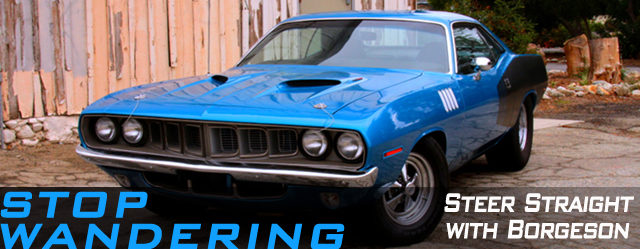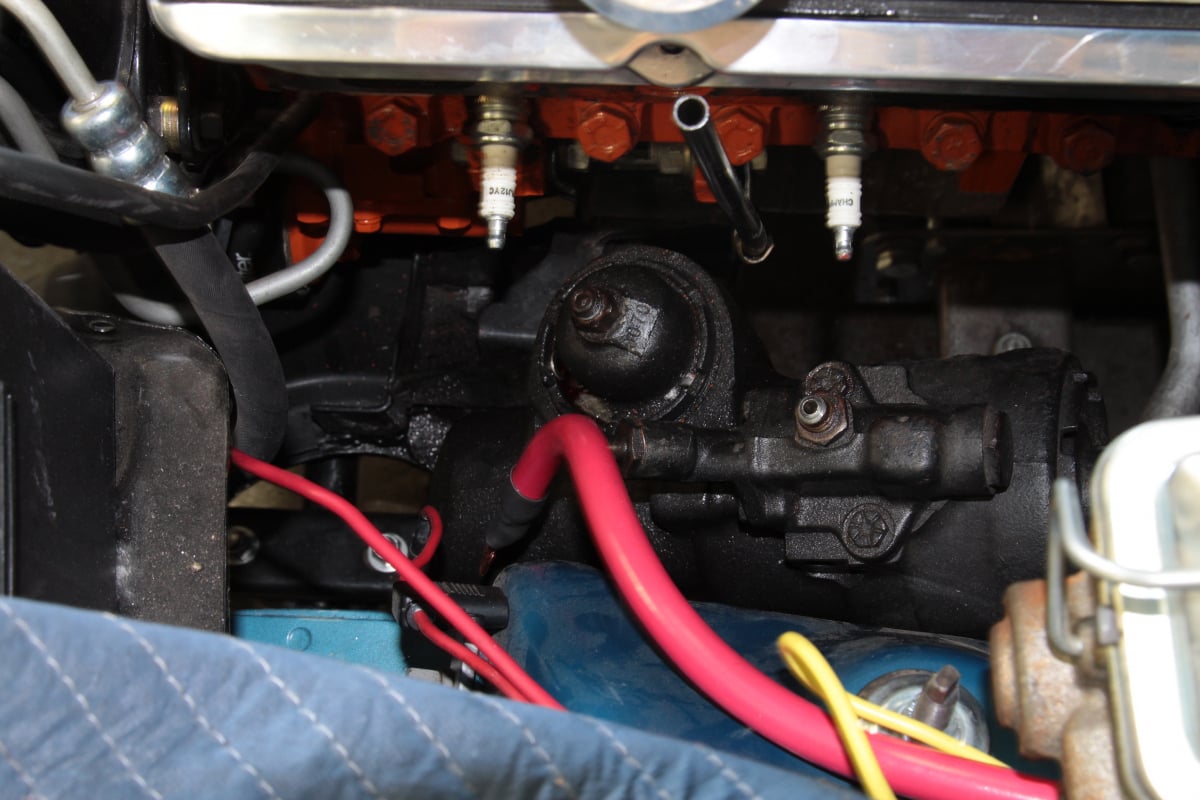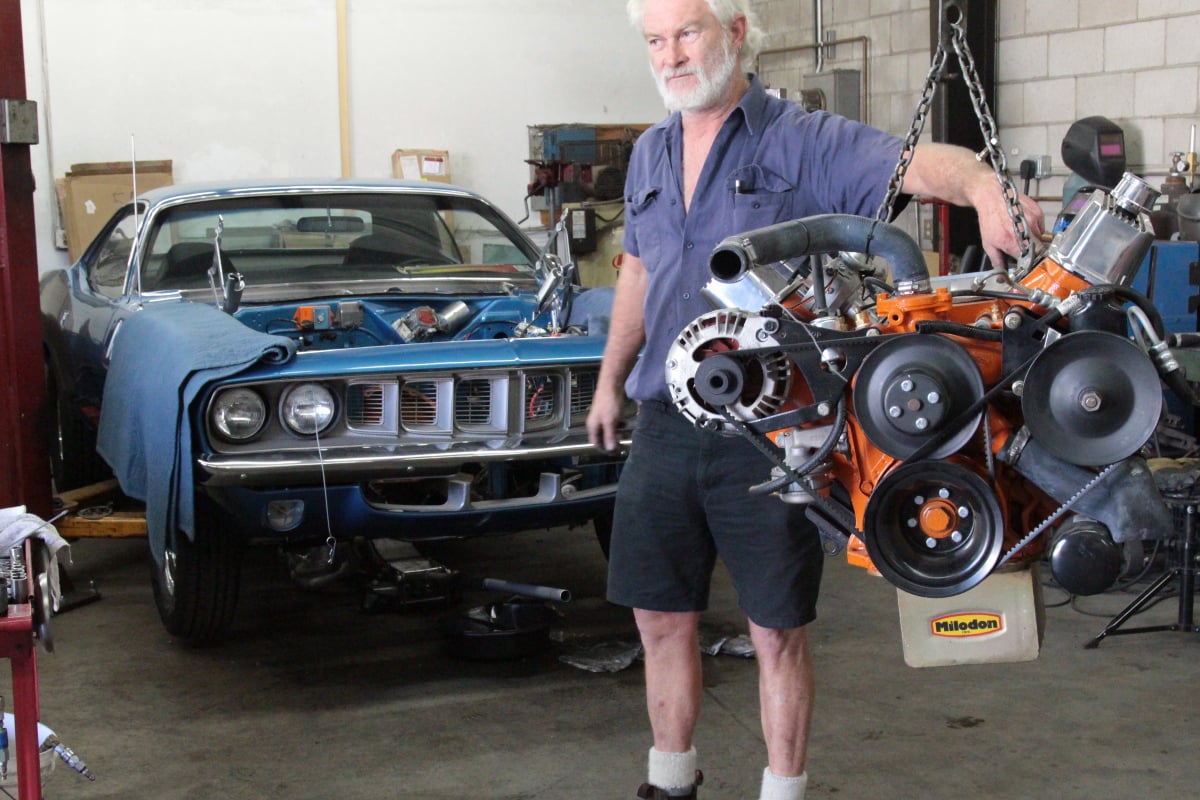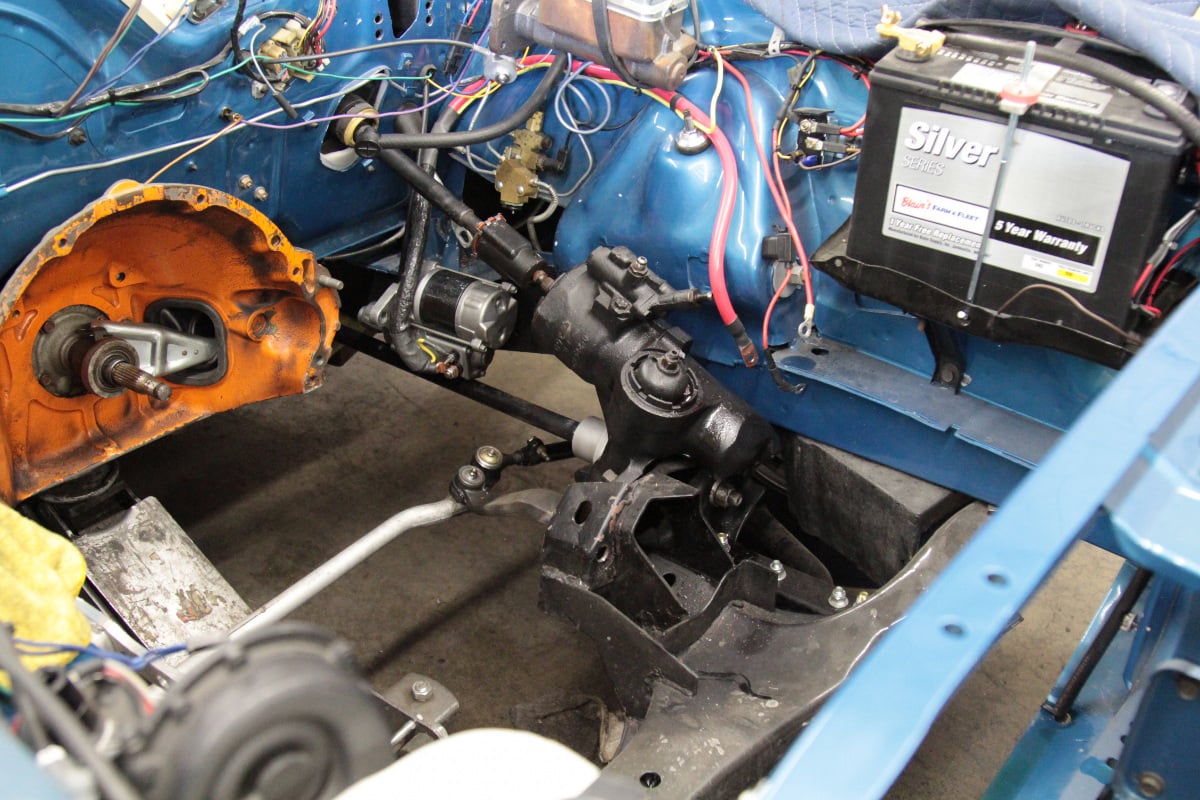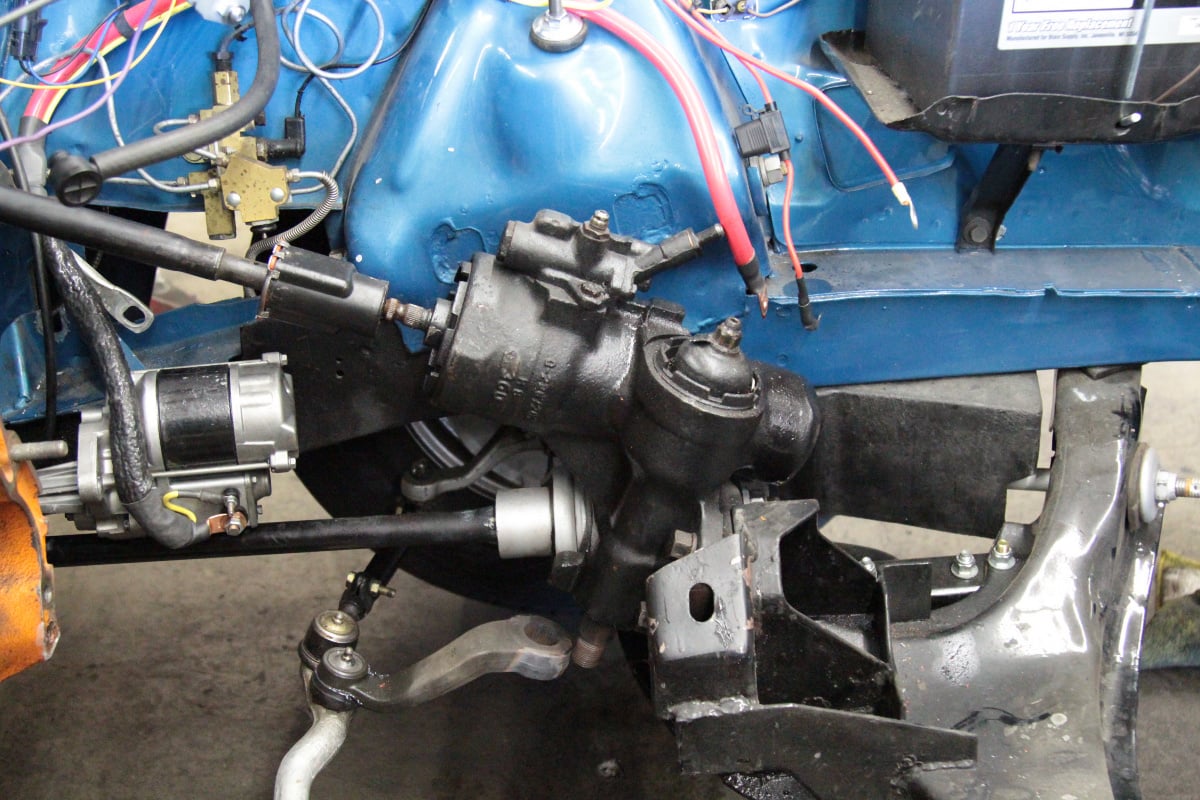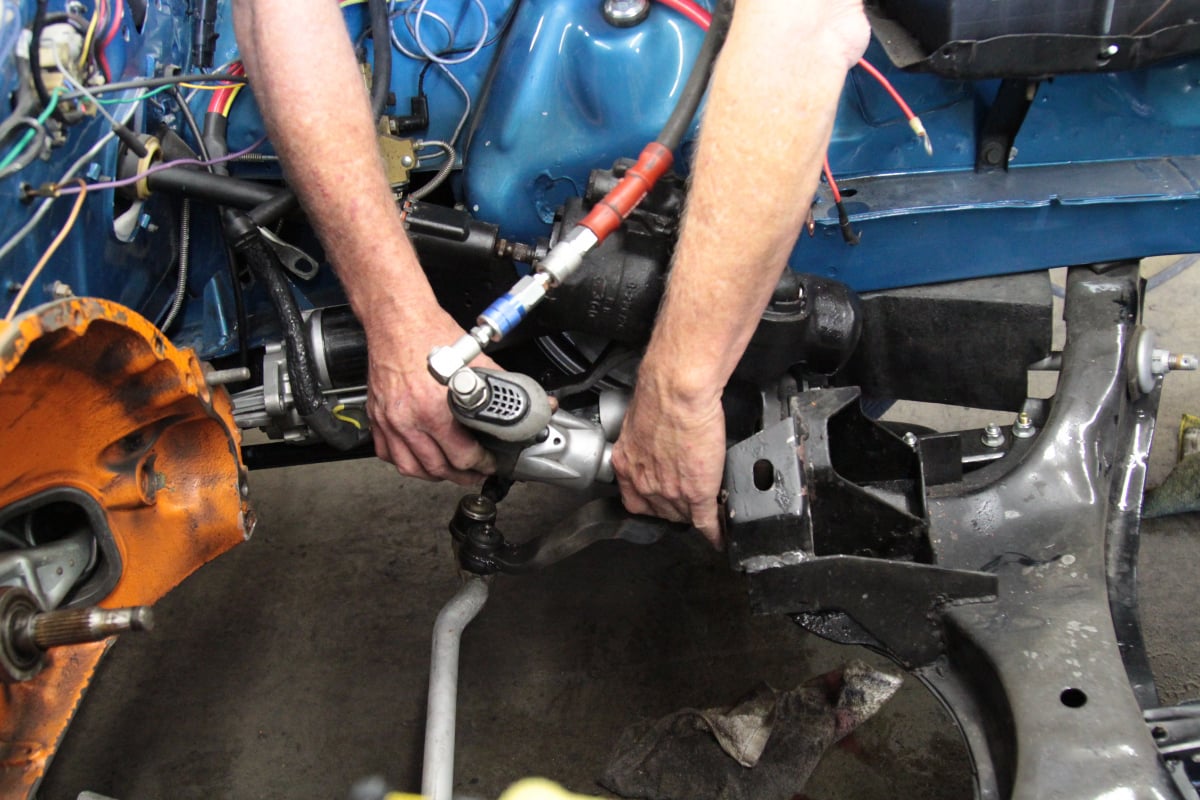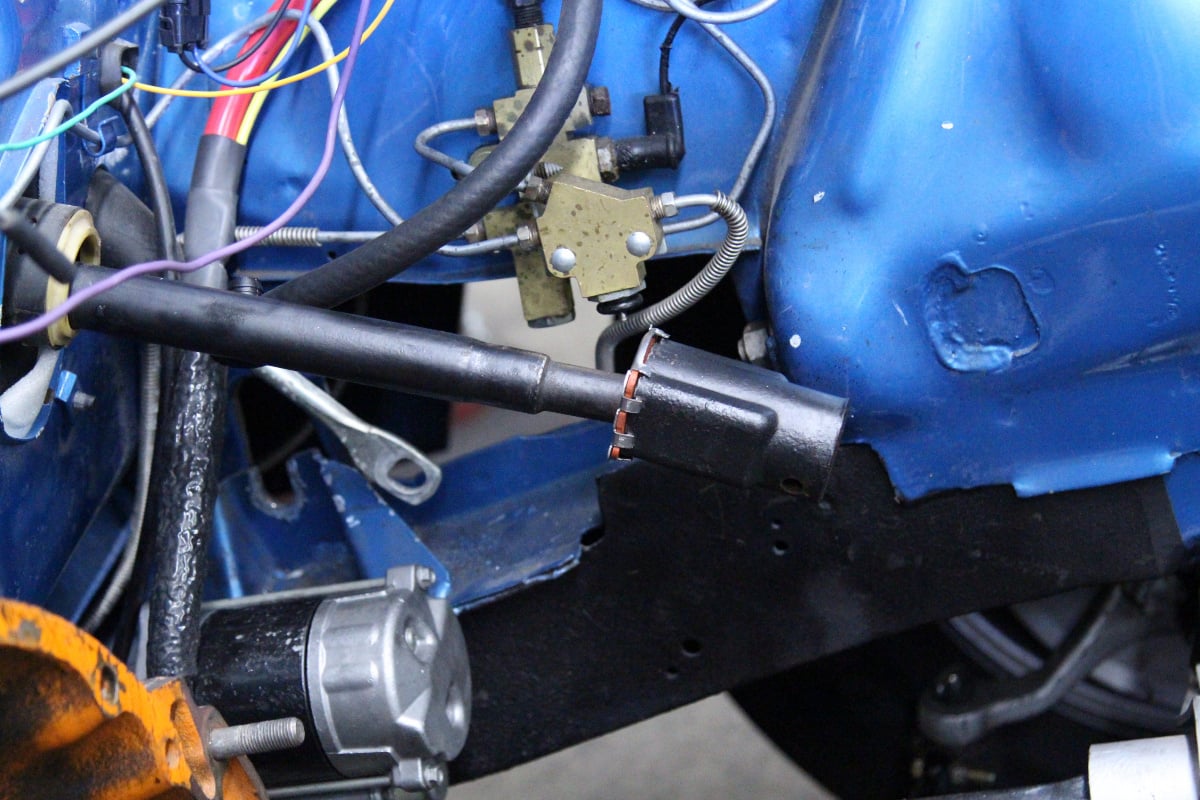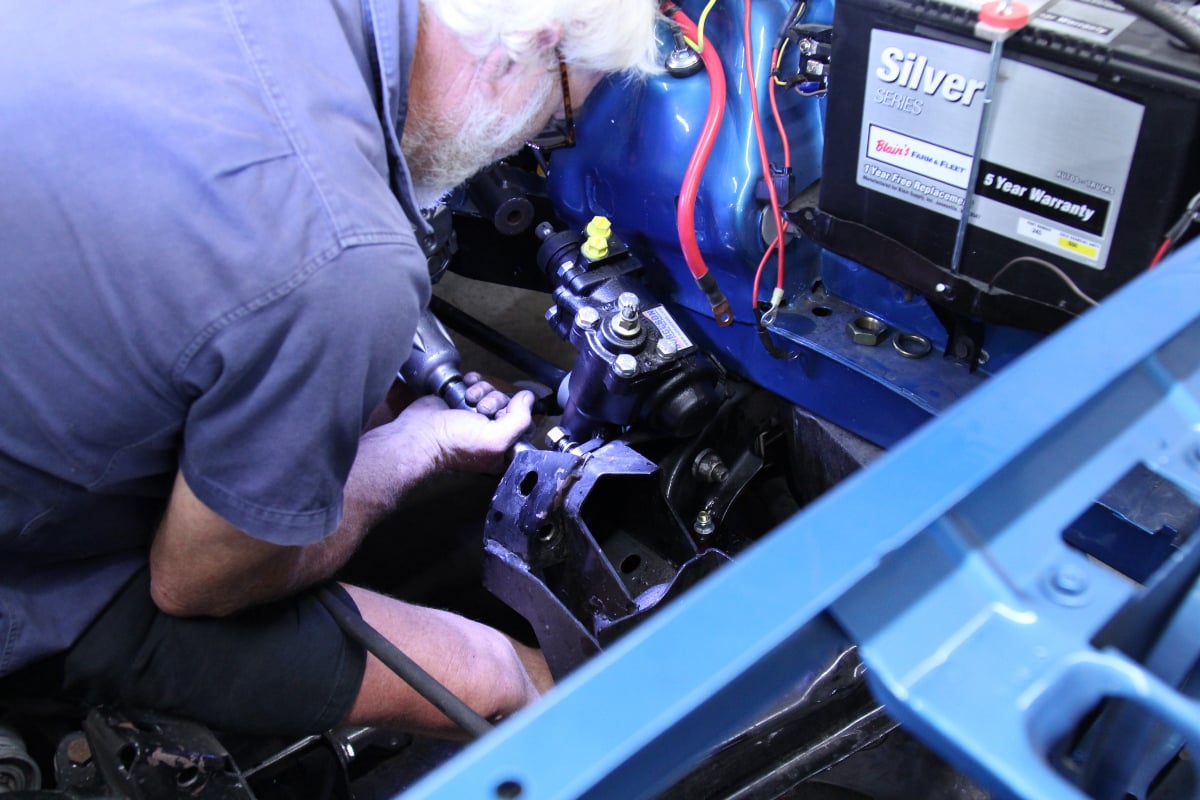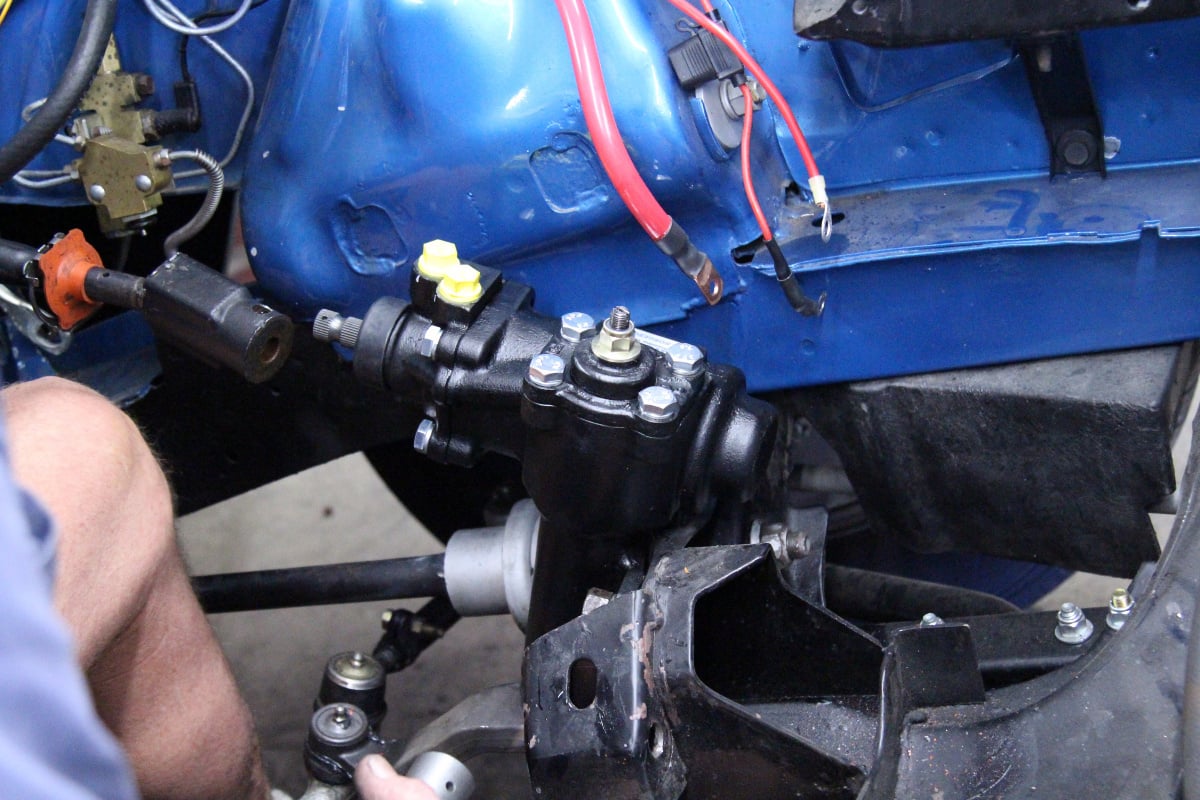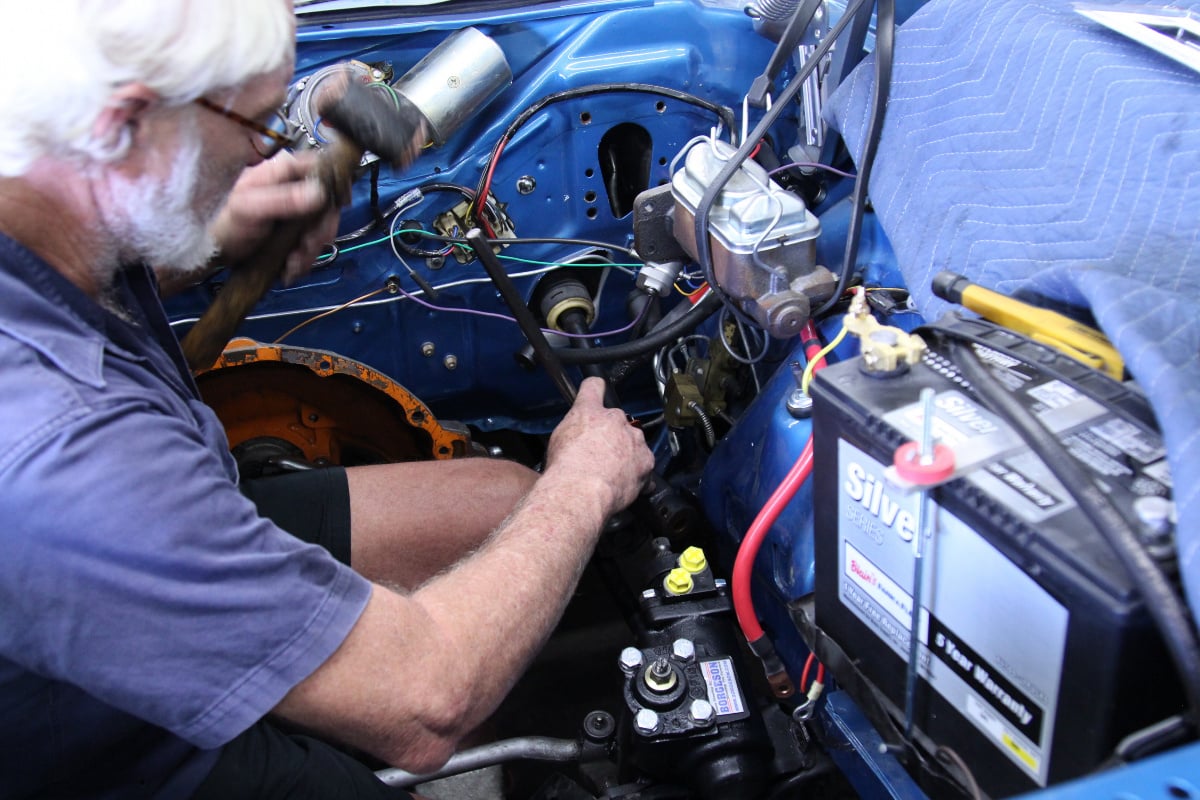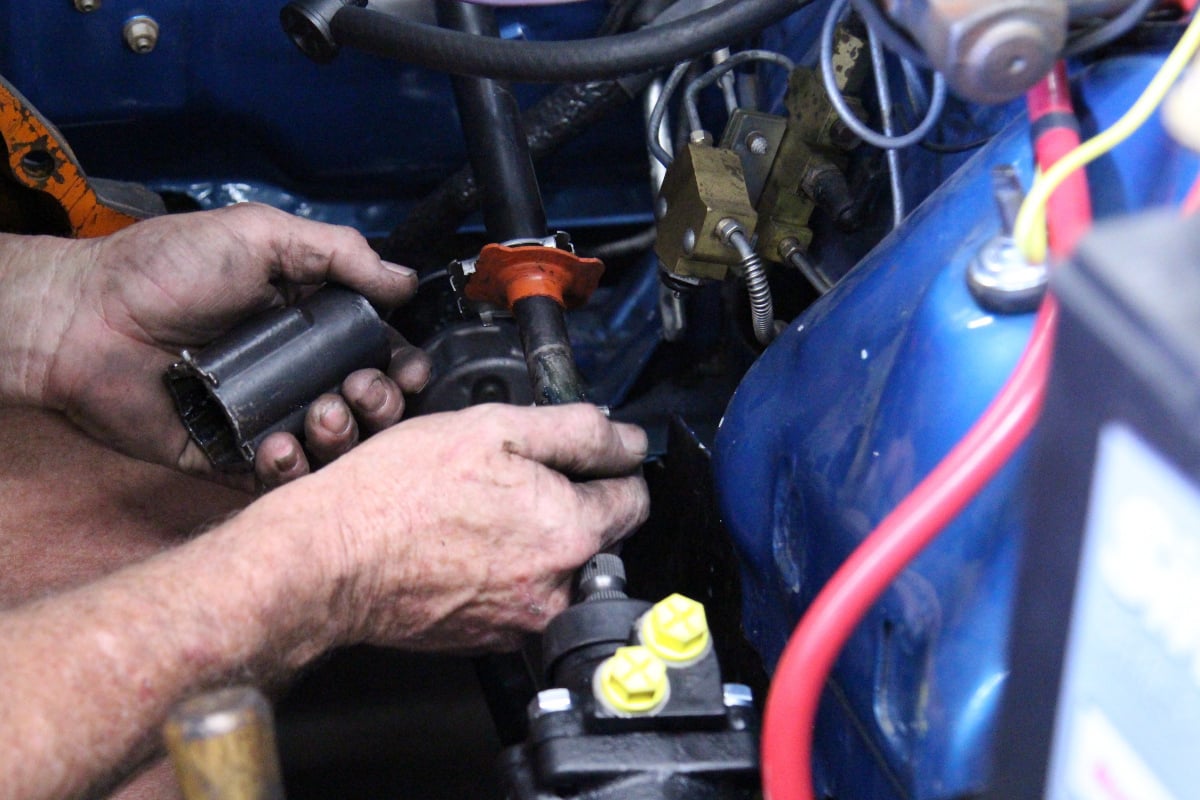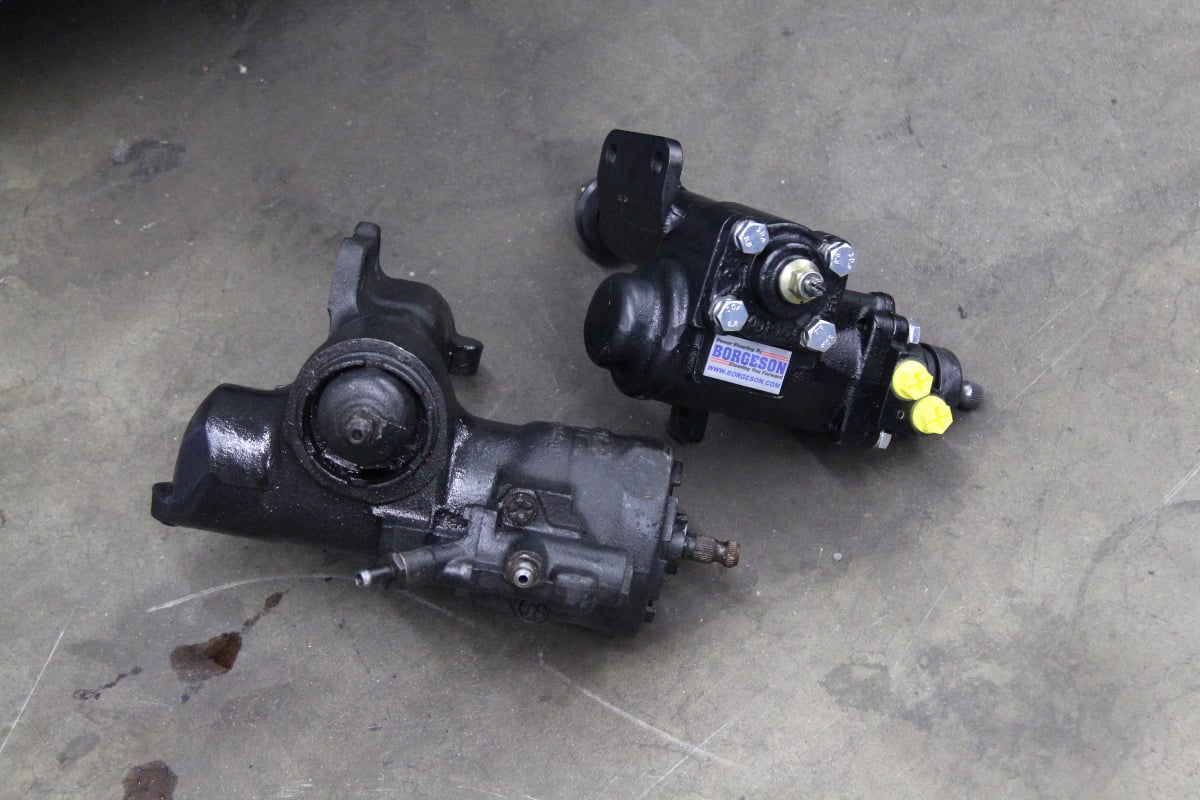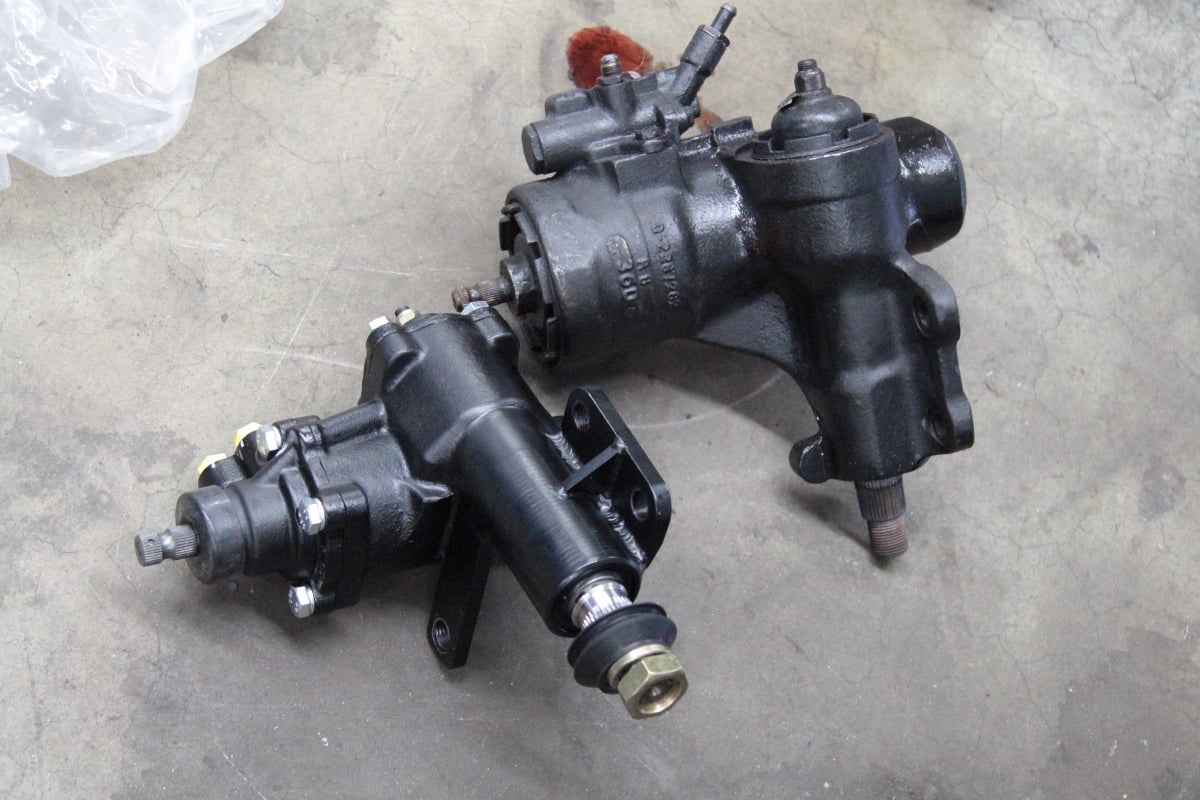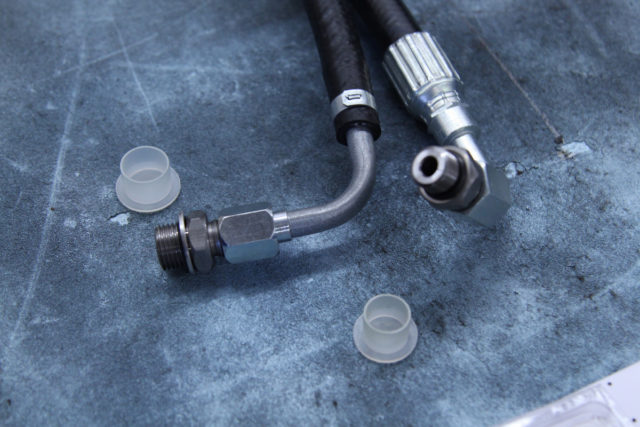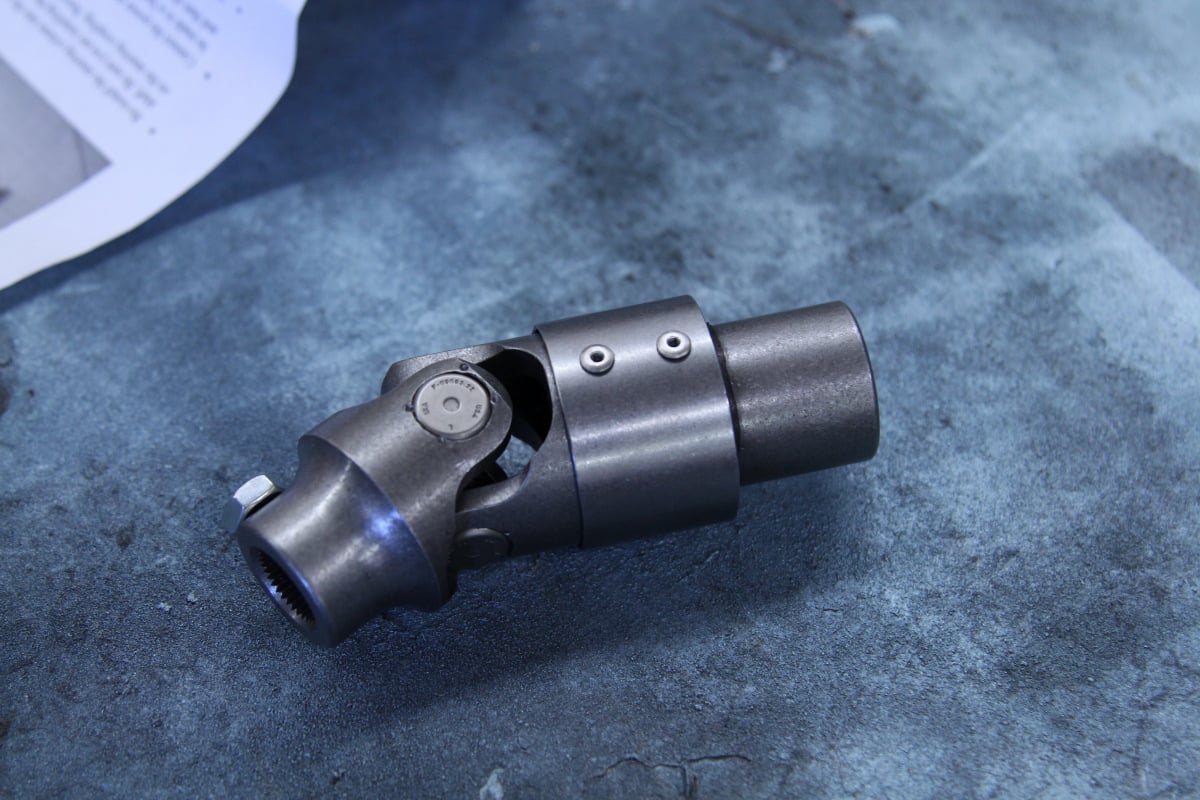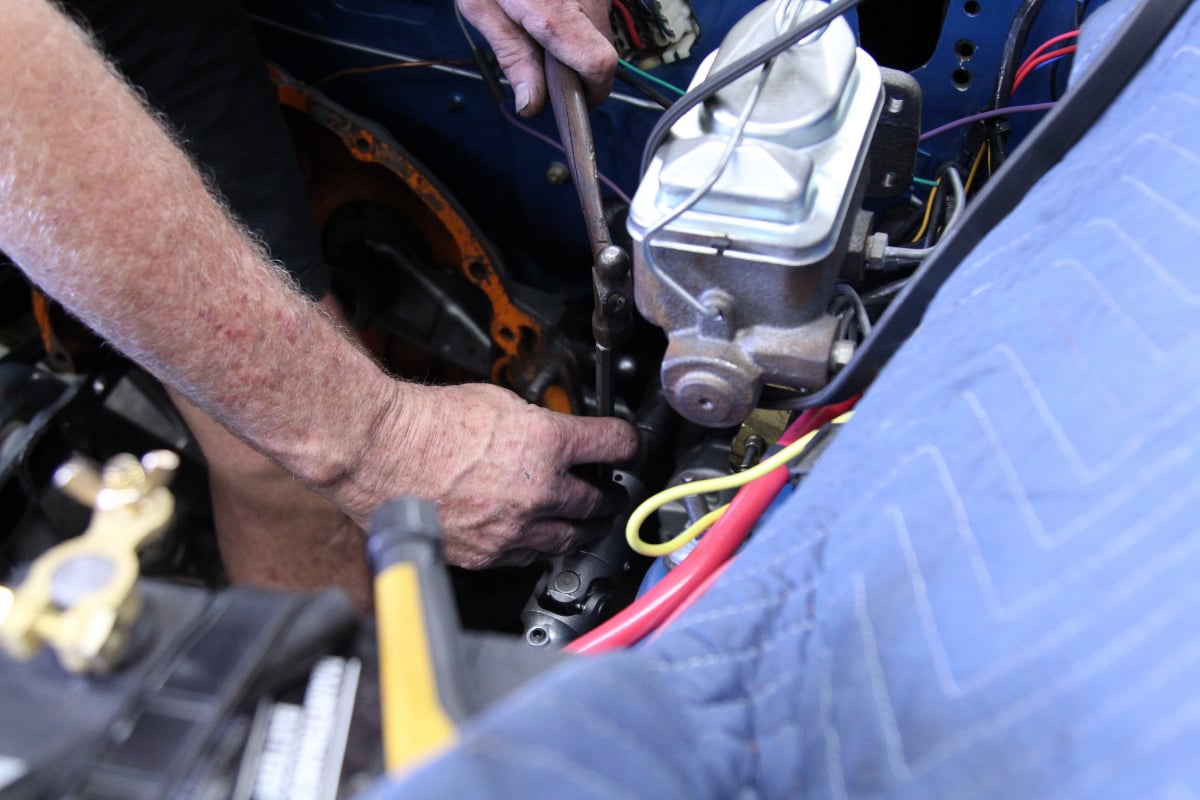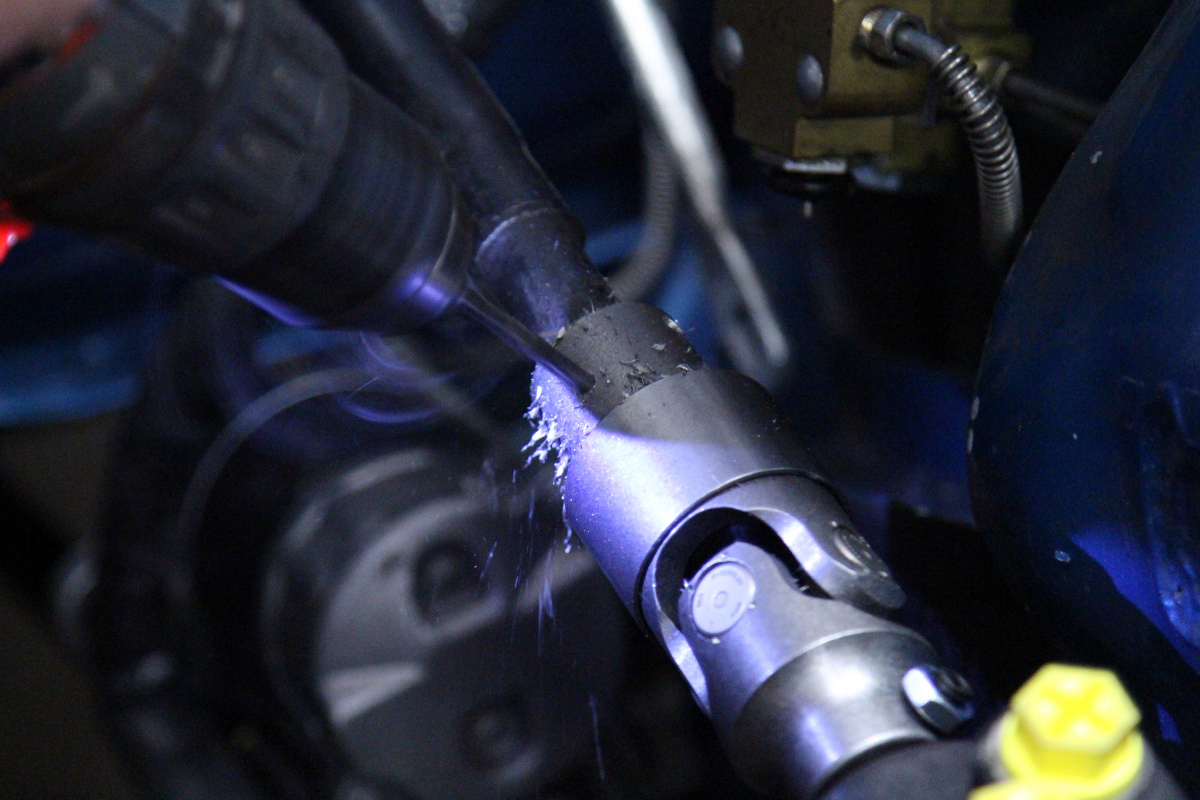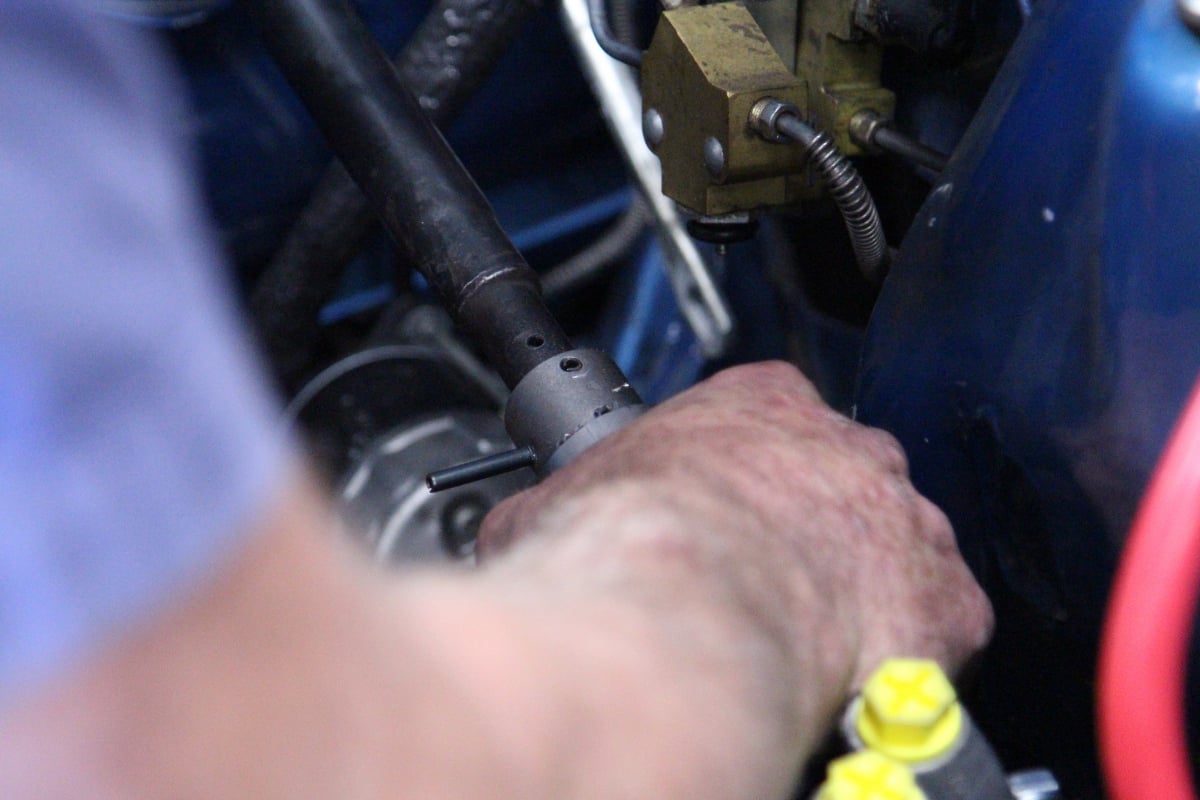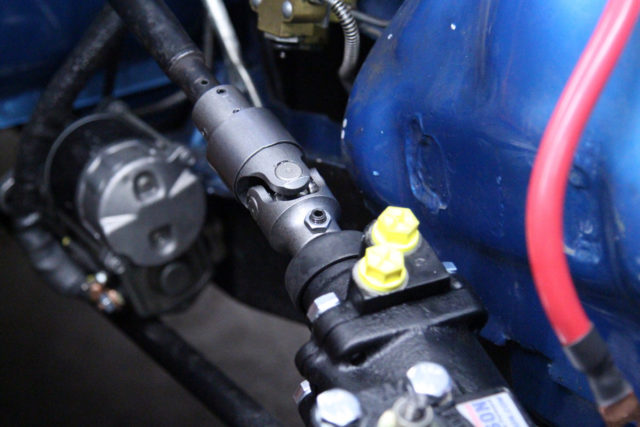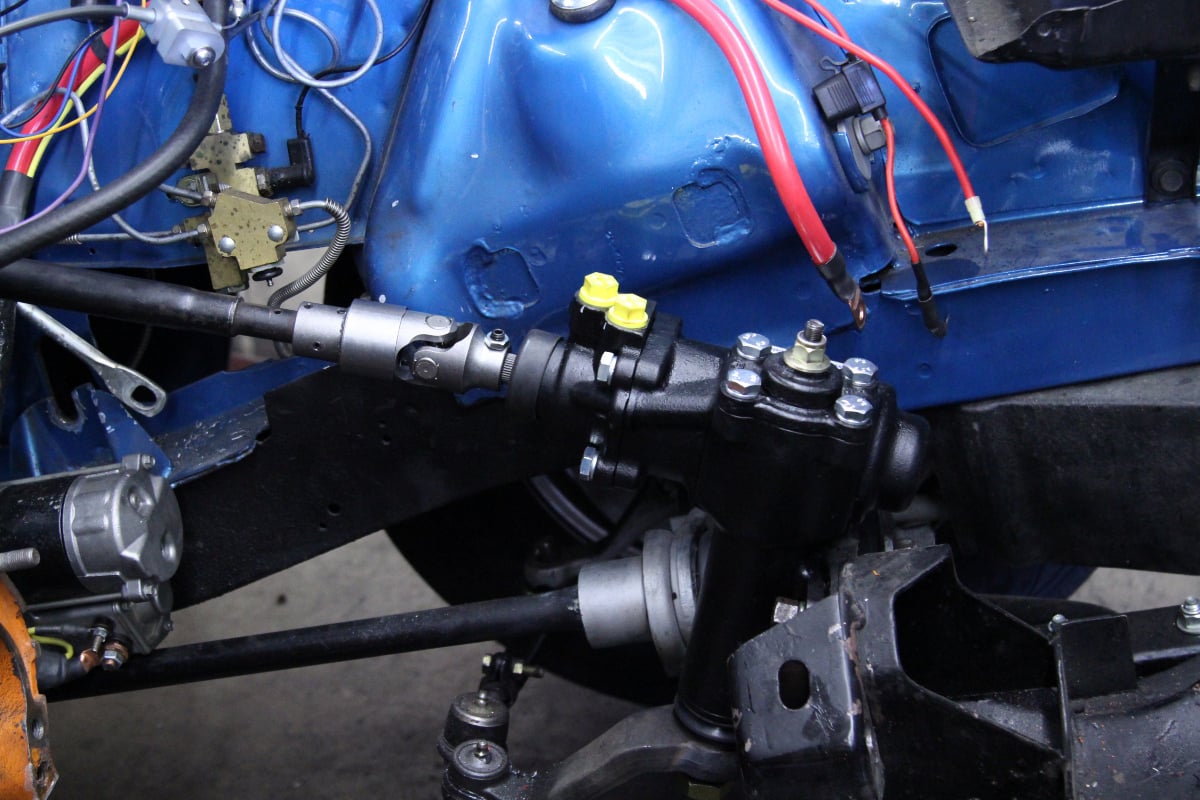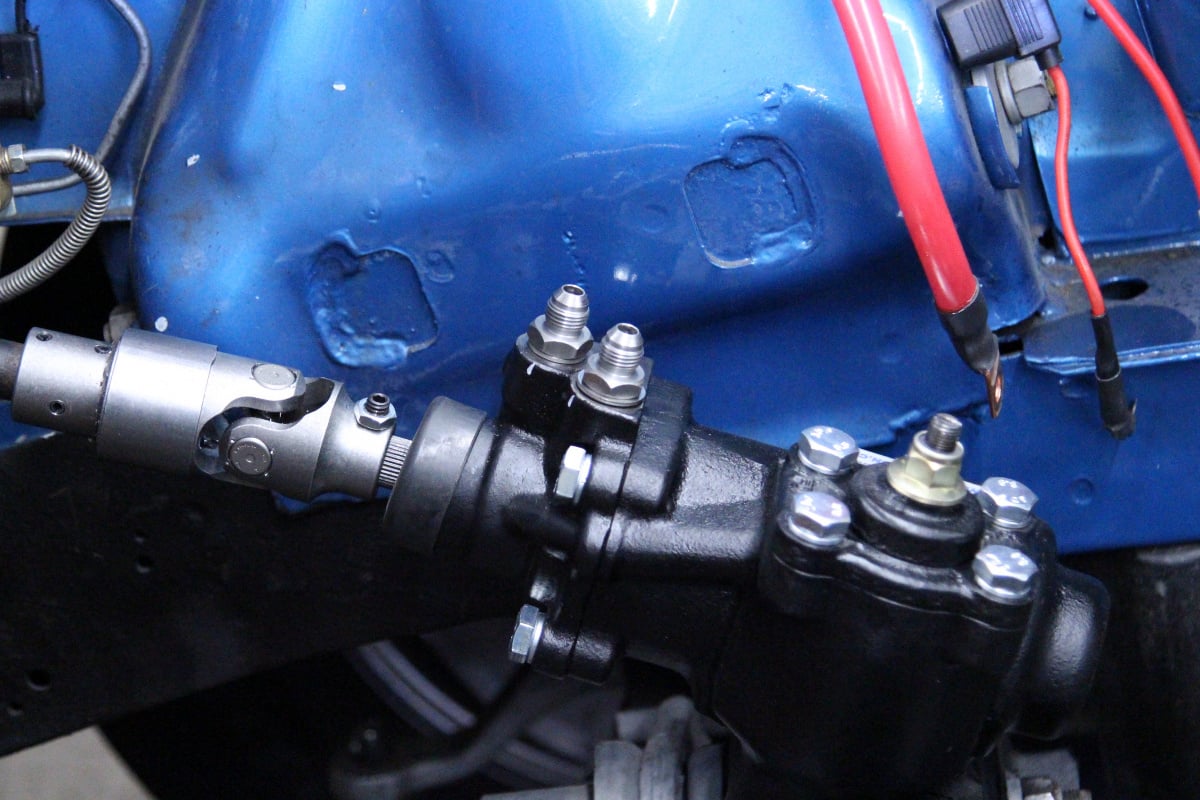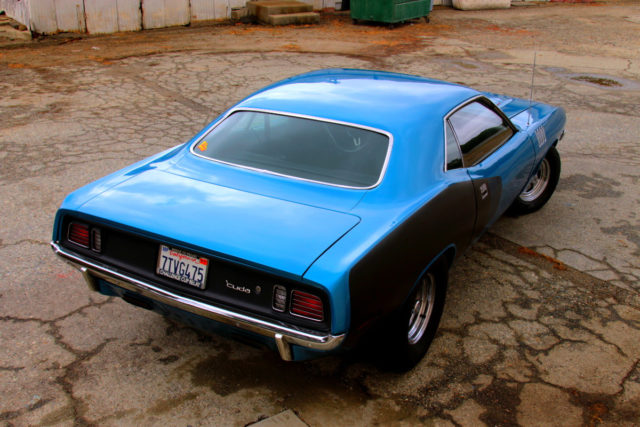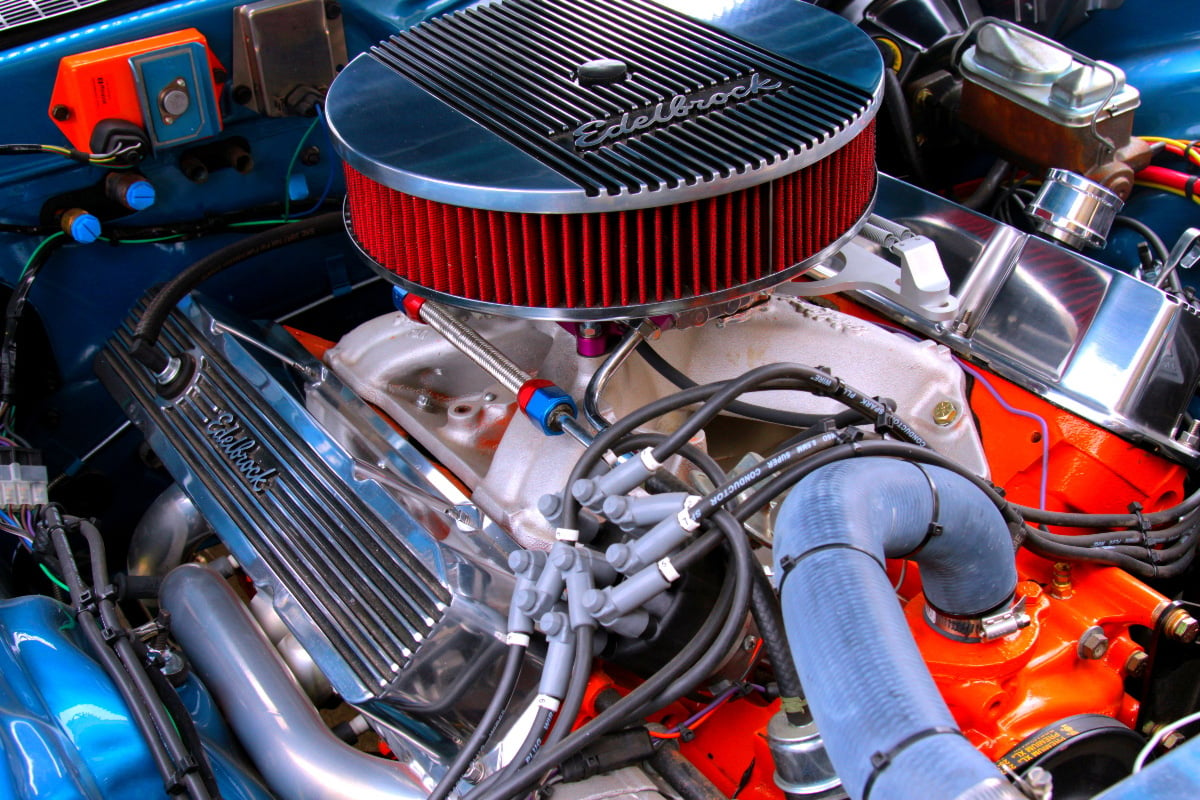When Stephen Poe decided it was time to get rid of his 1967 Hemi Barracuda [2] for something a little more street friendly, he couldn’t stay away from Mopar. With old school Pentastar blood running through his veins and an affinity to Plymouth’s wicked fish, he knew what he was looking for, and just had to wait for the right moment to reel in another gorgeous car. This time, it was a B5 Blue big-block 1971 ‘Cuda [3] that caught his eye.
But Stephen wanted nothing to do with that ‘Cadillac-style power steering’ that classic musclecars are notorious for. A couple trips around the block with Stephen riding shotgun, and it was a far cry from the feel of the steering in our 1965 Plymouth Belvedere, Project Track Attack [4], after we installed a Borgeson [5] power steering box.
Our installation back in 2013 [6] was to combat the same problem Stephen was having: lane wandering. One look over the shoulder to change lanes, and the car would begin the trek to the next lane before you’re ready. It was a huge improvement to the larger B-body, but for this beautiful E-body, Borgeson had something new for us.
It's cramped in the engine bay; since the engine had to come out for some other work to be done, it was the perfect opportunity to install a new steering box from Borgeson. There's plenty of room to work when that big-block is hanging from a chain.
We had one advantage this time around with the installation: the engine had a couple of bad lifters and a flat cam, so it had to come out. That made it the perfect opportunity for a steering box swap into the ’71 ‘Cuda; we know that the factory gear is more difficult to remove with the engine in place, but when opportunity knocks, Stephen decided it was time to answer.
That factory box doesn't look so difficult to remove without the engine hunkering down over it. Once the pitman arm and steering coupler were detached, the heavy box came out with just three bolts.
Mike Williams, of Schrader’s Speed & Style [12] in Azusa, California, made quick work of installing the steering box. After giving it a once over and heaving the bulky factory box out of the way, installation of the Borgeson unit was a piece of cake. He used the same three bolts from the factory steering box, and after centering the shaft that connects the box to the column by checking the lock-to-lock, he reinstalled the pitman arm – the wheels had already been left centered and straight.
The Borgeson box went in quickly; it starts as a new factory steering box and has the mounting flanges cut off so Borgeson can weld new flanges to fit the Mopar K-member. After removing the roll pin on the factory coupler, Mike was ready for the next step.
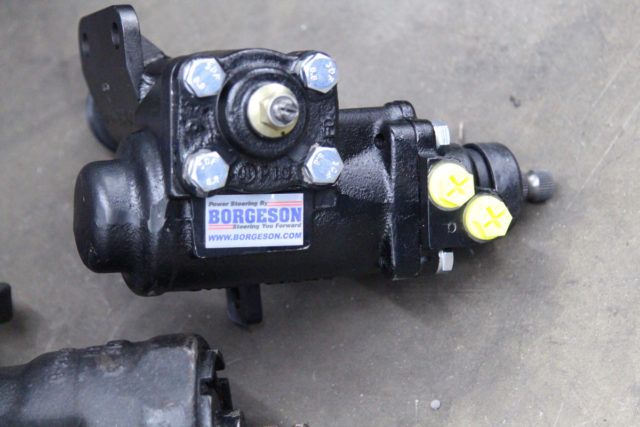 [18]
[18]If you’ve ever had to snake the factory box out through the limited opening in a Mopar, you’ll appreciate the compact Borgeson steering box. It shaves about 13 pounds off the front end, too.
All New, Better Price Point, Same Borgeson Quality
So what’s new with Borgeson’s latest offering for the Mopar world? Like the first-generation steering box, the new Mopar power-steering box is lighter than that factory box by roughly 13 pounds, and it’s still running a quicker 14:1 ratio. But, Borgenson’s Jeff Grantmeyer tells us the big difference is inside the box itself, which brings about a lower price.
We were able to drop about $100 off the cost of the box with the new design. -Jeff Grantmeyer, Borgeson
But, rather than pulling a bait and switch, Borgeson decided to pass those savings onto the customer. “We were able to drop about $100 off the cost of the box with the new design,” he said. That savings alone just about pays for the alignment that is recommended afterwards.
The size difference is noticeable; you'll especially notice the weight difference when you're lying on your back under the car installing the Borgeson unit.
The box itself is all-new, not rebuilt or reconditioned. As Grantmeyer has told us plenty of times before, “The problem with a rebuilt box is that you still have 40-year-old technology.” With this new unit, the feel is much firmer, and the lane wandering is history. The new box is re-splined to fit either early or late pitman arms, and will work for 1962-1982 Mopars with either the 1 1/8-inch (PN 800126 [21]) or 1 1/4-inch (PN 800127 [22]) sector shafts.
The hose kit includes the required adapters to attach factory hoses to the metric box; these adapters will also work with -6 AN fittings if you choose. The new coupler is a universal-type joint, and includes the high-speed steel bit to penetrate the hardened steel steering shaft.
Steering Coupler And Hose Kit
Borgeson also provides a hose kit (PN 925113 [26]) with the proper 16mm fittings required by the new box, with instructions included to identify the pressure line (closest to firewall) since both fittings are the same size. Because the engine was over by the bench hanging from a hoist, Mike set the hoses aside to wait for the engine to be stuffed back in so that he can route the pressure and return lines properly.
As you might guess, with the smaller box, that leaves a bit of an issue with reconnecting the steering shaft. Borgeson has taken care of that part for you with it’s Mopar Steering Coupler Kit. (PN 036425 [27]). Swapping steering boxes from one brand to another requires mating the new box to the original column, and not only is the input shaft slightly different, but the distance between the steering shaft and the new box changes as well.
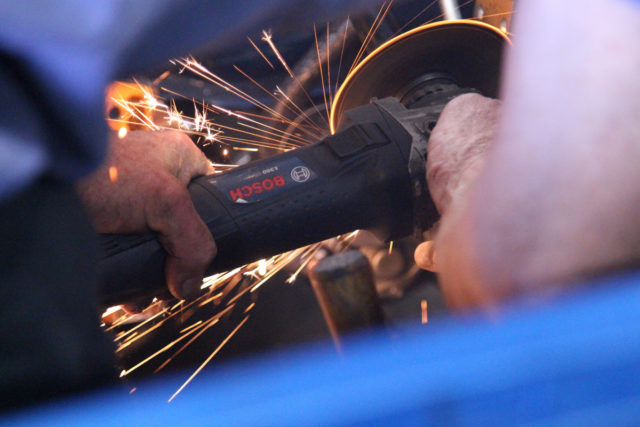 [28]
[28]If you’re going to modify the column with the engine installed, first mark where it needs to be cut and then remove the column from the vehicle. You won’t be able to get a clean cut with a cutoff wheel in the limited space.
To install the Borgeson coupler kit, a little cutting and drilling is required, so Mike wasn’t out of the woods yet, or out of the engine compartment. The process is rather simple, and, again, Borgeson provides full instructions on how to modify the steering shaft to accept the Borgeson coupler.
The break in metal-on-metal contact that our coupler provides eliminates this hydraulic noise from passing through to the steering wheel. -Jeff Grantmeyer
If you haven’t noticed that noise before – and who can with a thumping big-block stealing all the thunder – Grantmeyer explained that to us. He said, “The box we are adapting has the hose connections very close to the input shaft connection of the gearbox. The break in metal-on-metal contact that our coupler provides eliminates this hydraulic noise from passing through to the steering wheel.”
With the steering wheel centered, Mike marked the shaft and drilled the three holes. After the first was drilled, he inserted the first of three roll pins, assuring that nothing would shift or rotate while drilling the remaining holes. The included bit made this task much simpler, and was a nice touch.
Another nice thing about the Borgeson coupler is no more messing with the difficult clamp and rubber seal on the OE coupler housing – that, in itself, is a huge plus. If you’ve ever had to install a new factory coupler, you know that you can easily find yourself with mismatched slider shoes and coupler housing, there are a few different housings based on which car and what model year.
With the set screw secured, the last step for this part of the installation was to insert the included adapters. After the engine is rebuilt and stabbed back between the aprons, the hoses can be attached and the system filled with fluid. Overall, with the engine removed the installation took about an hour and a half - it will be considerably longer if you're crawling around under the car, but expect to spend an afternoon on the installation.
Borgeson provides the instructions of how to measure the shaft for cutting, and the new steering coupler has three holes for inserting roll pins after drilling the shaft. Of course, drilling into a hardened steel steering shaft is not going to work with your box store drill bits, so Borgeson even provides the proper drill bit for this task.
It’s recommended to make sure that the steering is lined up straight, along with the steering wheel. Since the steering hub and the input shaft are splined, adjustments can be made. However, the the steering column shaft and the Borgeson coupler are not splined, so getting everything straight just makes aligning the front end a little easier.
Mike drilled the first hole and inserted the first of three included roll pins. This assures that the second and third holes can be drilled properly, and that the coupler won’t shift if the drill bit tries to walk. A small tap from a center punch helps to keep the drill bit from wandering, and is recommended as well.
Just to reiterate the difference in size, here's the factory box (left) and the Borgeson box (right) installed. It's always a good day when you can remove 40-year-old technology and replace it with something modern that actually fits, and Borgeson pulls it off again.
Waiting For The Ponies
As we mentioned, the engine had to be pulled so we took full advantage of the open compartment to upgrade to the Borgeson steering box. It can be done with the engine in place, but you might have to unbolt the engine mounts and raise the vehicle a little to remove the large, factory box.
This unit is a new, lighter power steering box for existing power steering cars, but can also be installed on Mopars with manual steering boxes. Borgeson also has a brand new Saginaw-style steering pump (PN 800322 [36]) available for both big-block and small-block Mopars, as well as a small-block pump bracket kit (PN 802412 [37]) to save you from having to scrounge around the wrecking yards looking for the right brackets.
The 'Cuda is getting a new lease on life with a fresh engine and better steering. It will see plenty of cruising and car shows in the coming months - it's Southern California, we never shut down for winter!
If you’re looking to upgrade your steering to a modern, firm feedback in your 1962-1982 Mopar, check out the Borgeson website [41] and end your lane wandering. If you’re looking to upgrade your Ford [42] or GM [43] vehicle, Borgeson has you covered there with a modern feel power-steering box.
